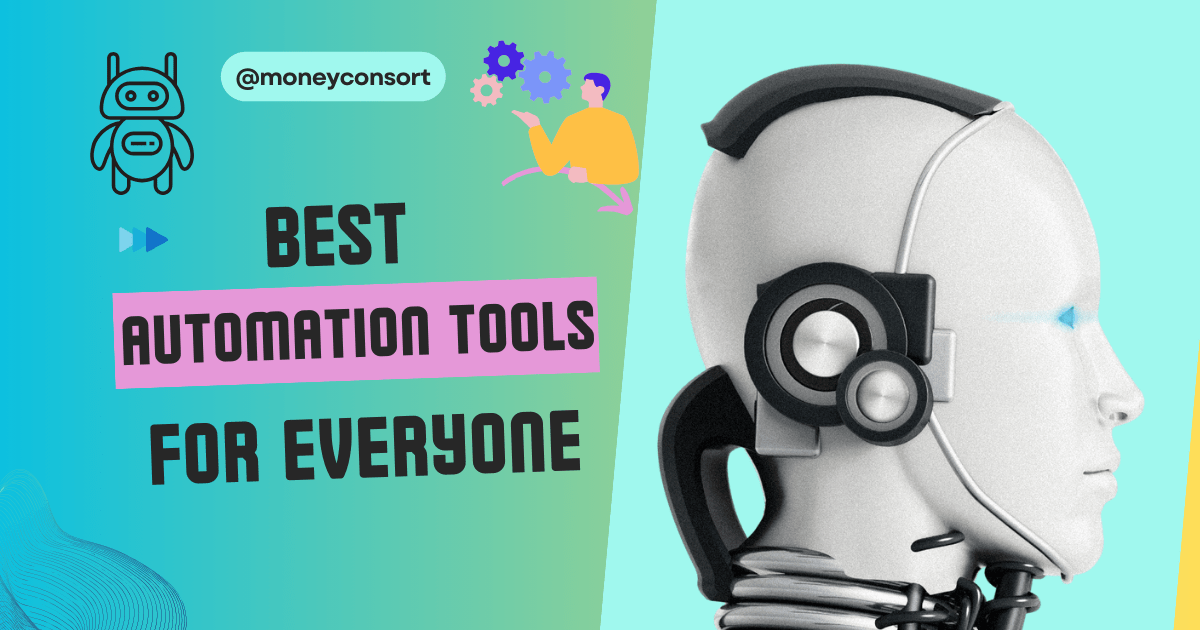In today’s fast-paced digital landscape, efficiency is key. Whether you’re a developer, tester, or IT professional, automation tools can revolutionize your workflow, freeing up time for innovation and creativity. Fortunately, in 2024, a plethora of free automation tools empower users across various domains. Let’s delve into some of the top picks.
free automation tools are invaluable assets in modern workflows, enhancing productivity and reliability. Whether you’re automating web testing, CI/CD pipelines, or API validation, these tools empower you to achieve more with less effort. Embrace the power of automation and unlock new levels of efficiency in your projects.
Page Contents
Selenium WebDriver
Ideal for web application testing, Selenium WebDriver offers cross-platform automation capabilities. With support for multiple programming languages, it’s a versatile choice for developers.
In the realm of web application testing and automation, Selenium WebDriver stands as a beacon of efficiency and reliability. As an open-source tool, Selenium WebDriver empowers developers with the capability to automate web browsers across different platforms, languages, and browsers.
At its core, Selenium WebDriver facilitates the automation of web interactions, allowing developers to simulate user actions such as clicking buttons, entering text, and navigating through web pages. Its versatility lies in its support for multiple programming languages, including Java, Python, C#, and more, enabling developers to work in their preferred environment.
One of Selenium WebDriver’s key strengths is its cross-browser compatibility. Whether you’re testing on Chrome, Firefox, Safari, or Internet Explorer, Selenium WebDriver ensures consistent behavior across different browsers, offering confidence in the reliability of your web applications.
Moreover, Selenium WebDriver seamlessly integrates with various testing frameworks and tools, enhancing its flexibility and scalability. Whether you’re implementing test automation in Agile development workflows or building comprehensive regression test suites, Selenium WebDriver adapts to your needs, ensuring efficient and effective testing processes.
With its robust features, including the ability to handle dynamic web elements, perform data-driven testing, and interact with web elements through XPath and CSS selectors, Selenium WebDriver empowers developers to create resilient, maintainable, and scalable automation solutions.
In essence, Selenium WebDriver is more than just a tool—it’s a catalyst for innovation and efficiency in web application development and testing. By harnessing its power, developers can accelerate their testing processes, improve software quality, and deliver exceptional user experiences in today’s dynamic digital landscape.
Robot Framework
Embracing keyword-driven testing, Robot Framework simplifies test case creation and execution. From acceptance testing to robotic process automation (RPA), it’s a robust choice for diverse automation needs.
Robot Framework emerges as a game-changer in the realm of test automation, offering developers a versatile and intuitive platform to streamline their automation workflows. As an open-source automation framework, Robot Framework excels in its simplicity, flexibility, and extensibility, making it a preferred choice for developers across diverse domains.
At its core, Robot Framework adopts a keyword-driven approach, enabling developers to create easily understandable test cases using plain text syntax. This approach not only simplifies test case creation but also enhances collaboration among team members, testers, and stakeholders.
One of Robot Framework’s standout features is its broad support for various test automation libraries and tools, including Selenium WebDriver, Appium, and REST API libraries. This extensive ecosystem empowers developers to automate testing across web applications, mobile apps, APIs, and more, all within a unified framework.
Moreover, Robot Framework’s built-in reporting and logging capabilities provide developers with actionable insights into test execution results, enabling them to identify issues quickly and make informed decisions to improve software quality.
Robot Framework’s extensibility further enhances its appeal, allowing developers to create custom keywords and libraries tailored to their specific requirements. This flexibility enables the framework to adapt to evolving project needs, ensuring scalability and maintainability over time.
Whether you’re automating acceptance tests, regression tests, or robotic process automation (RPA) tasks, Robot Framework offers a comprehensive solution that accelerates your automation journey while promoting collaboration, reliability, and efficiency.
In essence, Robot Framework serves as a developer’s Swiss Army Knife, empowering them to tackle automation challenges with ease, precision, and confidence. By embracing Robot Framework, developers unlock a world of possibilities in test automation, enabling them to deliver high-quality software at speed in today’s dynamic software development landscape.
AutoIt
Targeting Windows GUI tasks, AutoIt excels in automating repetitive desktop actions. Its scripting language enables seamless automation of keystrokes, mouse movements, and window interactions.
AutoIt is a scripting language primarily used for automating the Windows graphical user interface (GUI) and general scripting tasks. It’s often utilized for tasks such as automating repetitive actions, creating software prototypes, and even for creating malware (although it’s not its intended use).
AutoIt provides a simple syntax and a variety of built-in functions for window manipulation, keystroke simulation, mouse movement, file operations, and more. It’s known for its ease of use and its ability to quickly automate tasks without the need for extensive programming knowledge.
While AutoIt can be a powerful tool for automation, it’s important to use it responsibly and ethically, as with any automation tool.
Jenkins
For CI/CD automation, Jenkins is a stalwart choice. Its open-source nature and extensive plugin ecosystem make it a go-to tool for automating software builds, tests, and deployments.
Jenkins is an open-source automation server that is widely used for continuous integration (CI) and continuous delivery (CD) of software projects. It allows developers to automate the building, testing, and deployment of their applications, facilitating a faster and more reliable software development process.
Here are some key features and concepts associated with Jenkins:
- Jobs: In Jenkins, tasks are organized into jobs. A job can represent various stages of the software development process, such as building, testing, and deploying an application.
- Pipelines: Jenkins supports the concept of pipelines, which are defined using a domain-specific language (DSL) called Jenkins Pipeline. Pipelines allow users to define the entire software delivery process as code, enabling better traceability, version control, and reuse of configurations.
- Plugins: Jenkins has a vast ecosystem of plugins that extend its functionality. These plugins cover various aspects such as source code management, build tools integration, testing frameworks, deployment options, and notification services.
- Integration: Jenkins integrates with popular version control systems like Git, Subversion, and Mercurial, allowing it to automatically trigger builds upon code changes. It also integrates with various testing frameworks, cloud platforms, and deployment tools.
- Distributed Builds: Jenkins can distribute build tasks across multiple machines, allowing for parallel execution of jobs and efficient resource utilization.
- Monitoring and Reporting: Jenkins provides dashboards and reports that give insights into build statuses, test results, and overall project health. This helps teams identify issues quickly and make informed decisions.
Jenkins is highly flexible and customizable, making it suitable for a wide range of software development projects, from small teams to large enterprises. It has a vibrant community and extensive documentation, which contribute to its popularity and widespread adoption in the software development industry.
Postman
Streamlining API testing, Postman offers a user-friendly interface for designing, testing, and monitoring APIs. Its automation capabilities integrate seamlessly with CI/CD pipelines, ensuring robust API performance.
Postman is a popular collaboration platform for API development. It’s commonly used by developers to design, build, test, and document APIs, as well as to streamline collaboration between team members working on API-related tasks. Here are some key features and functionalities of Postman:
- API Testing: Postman allows users to create and execute API requests using a simple and intuitive interface. It supports various HTTP methods (GET, POST, PUT, DELETE, etc.) and enables users to customize request headers, parameters, and payloads.
- Collections: Collections in Postman are groups of related requests that can be organized hierarchically. They allow users to organize and manage API endpoints efficiently, making it easier to maintain and share collections across teams.
- Variables and Environments: Postman allows users to define variables and environments, which can be used to parameterize requests and make them reusable. This feature is particularly useful for testing APIs with different configurations (e.g., development, staging, production).
- Automated Testing: Postman supports the creation of automated test scripts using JavaScript. Users can write tests to validate API responses, perform assertions on response data, and verify the correctness of API behavior.
- Mock Servers: Postman provides mock servers that allow users to simulate API endpoints and responses without the need for a backend implementation. Mock servers are useful for early-stage development and testing, enabling front-end and backend teams to work in parallel.
- Documentation: Postman allows users to generate interactive API documentation directly from their collections. This documentation includes details about endpoints, request parameters, response schemas, and example requests, making it easier for developers to understand and use the API.
- Collaboration: Postman facilitates collaboration between team members by providing features such as shared workspaces, comments, and version control for collections. Team members can collaborate on API development, testing, and documentation in real time.
- Monitoring: Postman offers monitoring capabilities that allow users to monitor the performance and availability of their APIs. Users can set up monitors to periodically send requests to their APIs and receive alerts if any issues are detected.
Overall, Postman is a versatile tool that helps streamline the API development lifecycle, from design and testing to documentation and monitoring. Its user-friendly interface, extensive feature set, and collaborative capabilities make it a popular choice among developers and teams working on API-related projects.
These tools cover a wide range of automation needs, from web and mobile testing to API testing and CI/CD automation. Depending on your specific requirements and preferences, you can choose the tool that best fits your needs.
Discover more from MONEY CONSORT
Subscribe to get the latest posts sent to your email.




